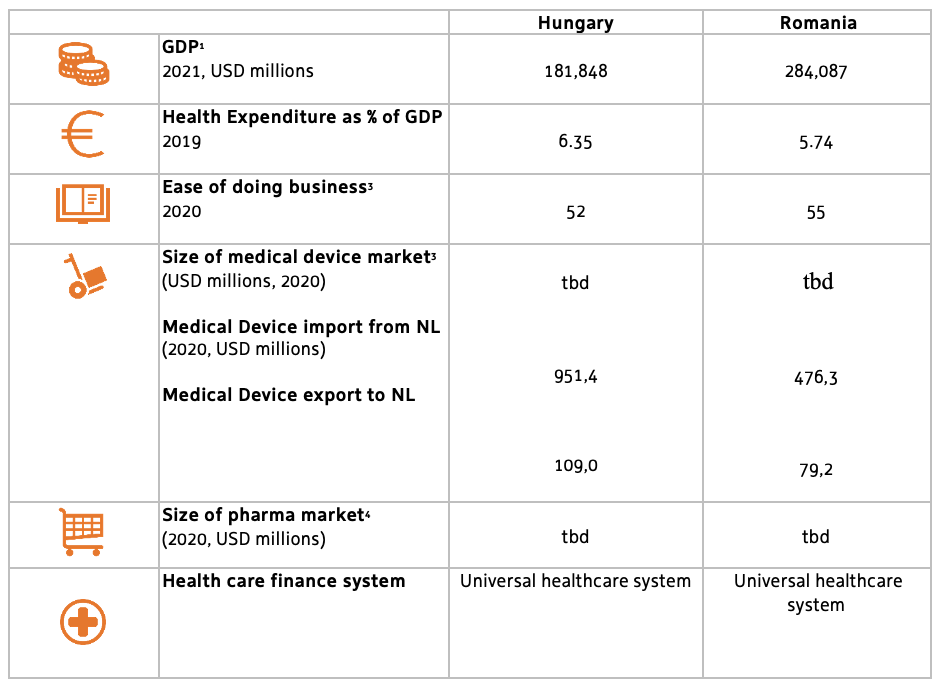Romania is an eastern European country with a population of 19.12 million people, making it the 12th largest European country. The capital of Romania is Bucharest. Romania is part of the EU, NATO, European Council, BSEC and WTO. Romania is a developing country with a high-income economy.
Romania has a highly centralised universal health care system with a spending of 5% of the GDP. The system covers medical examinations, surgical operations and post operative medical care. It provides free or subsidised medicine. Although the Social Health Insurance and increased health spending Romania has a relatively low life expectancy at birth of 74.2 in comparison with 80.6 as European average. Romania is receiving funds from institutions like the World bank, European Investment Bank and the EBRD. Due to Covid-19 some important reforms took place, one of them being the implementation of telemedicine solutions.
Hungary is a central European country with a population of 9.71 million people. The capital of Hungary is Budapest, through which the Danube flows. Hungary has a high-income economy and a high human development index. Part of this is due to the universal health care system which is free for children under sixteen and certain groups of the society. The Hungarian health care system was communistic after the second world war. In 1990 it changed to a universal healthcare system with a social insurance system which still has strong centralised control. Hungary is a popular destination for medical tourism, especially dental tourism. Like Romania Hungary also has a low life expectancy in comparison with the EU average (75,7 years).

